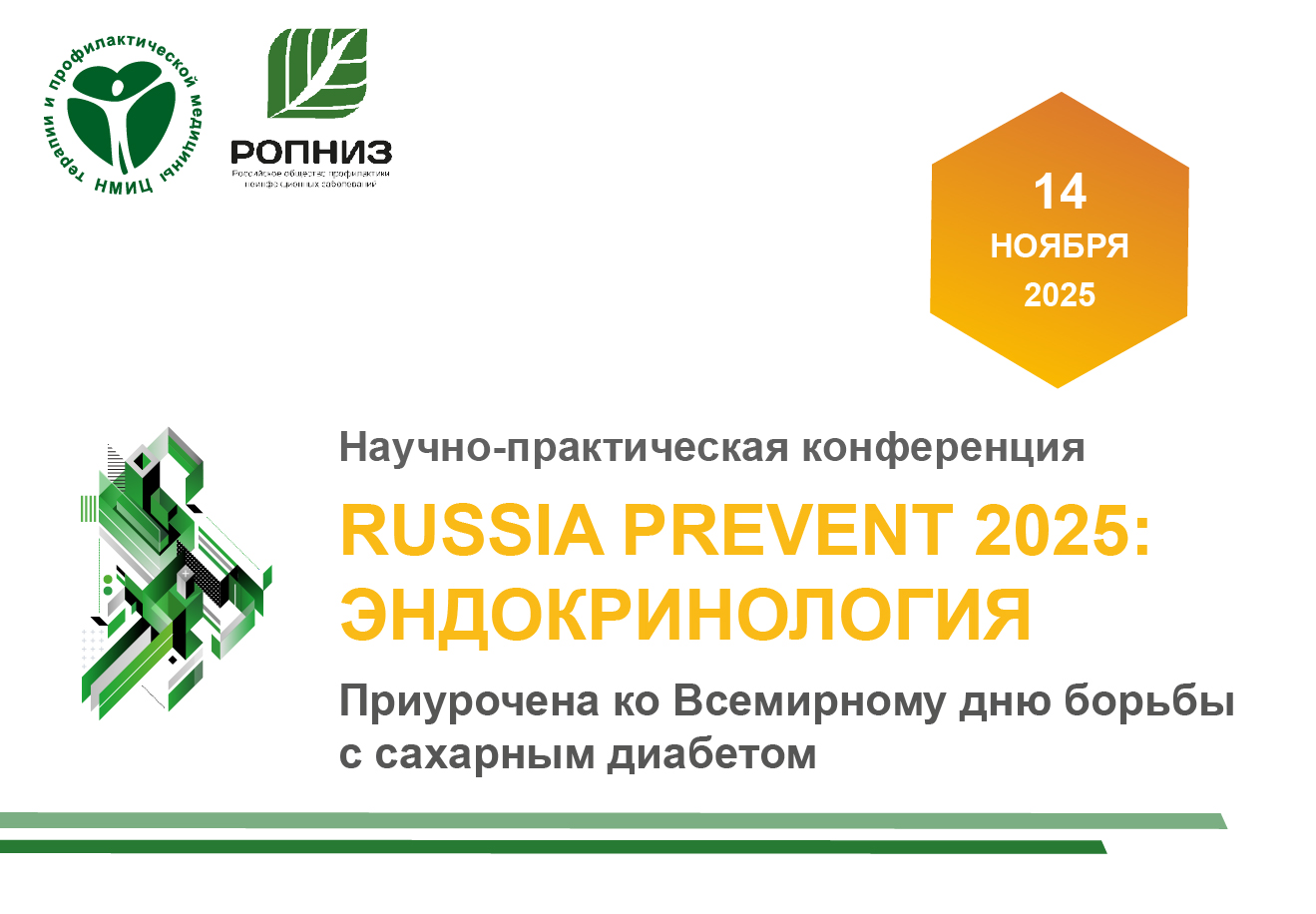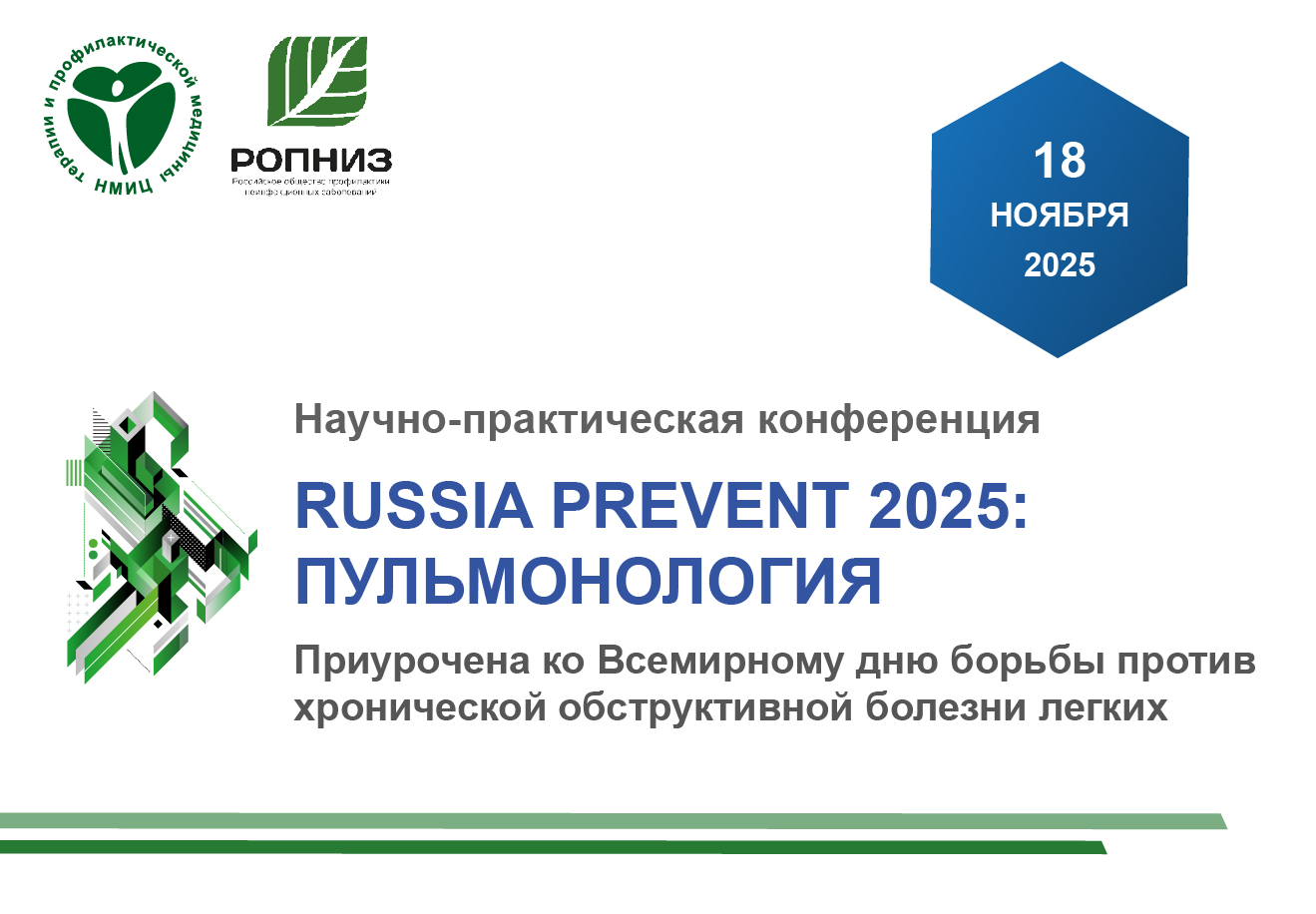Five-year followup of patients with pulmonary embolism in the Russian Sirena registry
https://doi.org/10.15829/1728-8800-2025-4419
EDN: WAMPFO
Abstract
Aim. To evaluate the results of a five-year follow-up of patients included in the Russian Registry of Acute Pulmonary Embolism (SIRENA), available to the contact at this stage of monitoring.
Material and methods. The SIRENA registry is a prospective, multicenter, observational cohort study designed to evaluate the treatment outcomes of patients with pulmonary embolism (PE) In Russian hospitals. The primary endpoints were all-cause death, recurrent PE, and major bleeding. Bleeding severity was defined according to the BARC (Bleeding Academic Research Consortium) criteria.
Results. A total of 283 patients aged 32 to 97 years (mean age 69 (59-76) years) were enrolled at nine centers; 135 of them were men (47,0%). Over 5 years of follow-up, 99 of 283 (34,9%) patients died. The most common causes of death were cancer (14,1%), death related to coronavirus disease 2019 (COVID-19) (17,2%), and recurrent PE (16,2%). During the first year of follow-up, cancer and recurrent PE were most frequent mortality causes, while deaths from COVID-19 and other cardiovascular diseases were more common during the 12-60-month follow-up period. Long-term anticoagulant therapy was continued by 29,7% of patients with PE at 60 months of follow-up, with 21 patients (7,4%) having bleeding episodes during this period. Most commonly, patients experienced one episode of BARC type 1 bleeding, but three patients experienced 10 or more bleeding episodes, which were considered minor.
Conclusion. Thus, this five-year study of patients with PE provides an assessment of their treatment outcomes 60 months after PE and may form the basis for future research on venous thromboembolism. High mortality rates, recurrent venous thromboembolism, and bleeding events within five years of follow-up after diagnosis of PE highlight the importance of effective treatment and accurate risk stratification for adverse outcomes.
About the Authors
E. A. ShmidtRussian Federation
Academician Barbarash Boulevar 6, Kemerovo, 650002
O. L. Barbarash
Russian Federation
Academician Barbarash Boulevar 6, Kemerovo, 650002
S. A. Berns
Russian Federation
Petroverigsky Lane, 10, bld. 3, Moscow, 101990,
D. V. Duplyakov
Russian Federation
Chapaevskaya Str. 89, Samara, 443099
A. D. Erlich
Russian Federation
Ostrovityanova str., 1, Moscow, 117513
O. A. Lozhkina
Russian Federation
Academician Barbarash Boulevar 6, Kemerovo, 650002
A. G. Neeshpapa
Russian Federation
Academician Barbarash Boulevar 6, Kemerovo, 650002
References
1. Konstantinides SV, Meyer G, Becattini C, et al. 2019 ESC guidelines for the diagnosis and management of acute pulmonary embolism developed in collaboration with the European Respiratory Society (ERS). Eur Heart J. 2019;41:543603. doi:10.1093/eurheartj/ehz405.
2. Keller K, Hobohm L, Ebner M, et al. Trends in thrombolytic treatment and outcomes of acute pulmonary embolism in Germany. Eur Heart J. 2020;41:5229. doi:10.1093/eurheartj/ehz236.
3. Turpie AGG, Farjat AE, Haas S, et al. 36month clinical outcomes of patients with venous thromboembolism: GARFIELDVTE Thrombosis Research. 2023;222:319. doi:10.1016/j.thromres.2022.11.016.
4. Erlikh AD, Atakanova AN, Neeshpapa AG, et al. Russian register of acute pulmonary embolism SIRENA: characteristics of patients and inhospital treatment. Russian Journal of Cardiology. 2020; 25(10):3849. (In Russ.) doi:10.15829/1560407120203849. EDN: ECZZNO.
5. Erlikh AD, Barbarash OL, Berns SA, et al. SIRENA score for inhospital mortality risk assessment in patients with acute pulmonary embolism. Russian Journal of Cardiology. 2020;25(4S):4231. (In Russ.) doi:10.15829/1560407120204231. EDN: BWZBHT.
6. Kikkert WJ, van Geloven N, van der Laan MH, et al. The Prognostic Value of Bleeding Academic Research Consortium (BARC)defined bleeding complications in clopidogrel plus heparin in patients with STsegment elevation myocardial infarction. Eur Heart J. 2014; 35:228594.
7. Cohen AT, Gitt AK, Bauersachs R, et al. The management of acute venous thromboembolism in clinical practice. Results from the European PREFER in VTE Registry Thromb. Haemost. 2017;11:132637. doi:10.1160/TH16100793.
8. Shmidt EA, Penskaya TYu, Gruzdeva OV, et al. Longterm anticoagulant therapy in the aspect of secondary prevention of recurrent pulmonary embolism. Cardiovascular Therapy and Prevention. 2024;23(5):3869. (In Russ.) doi:10.15829/1728880020243869. EDN: NONVEU.
9. Nikulina NN, Terekhovskaya YuV, Yakushin SS. Antithrombotic Therapy and the Nearest Forecast of Pulmonary Embolism in Rutine Clinical Practice (Data of the Regional Vascular Center of the Ryazan Region). Rational Pharmacotherapy in Cardiology. 2022;18(2):13542. (In Russ.) doi:10.20996/1819644620220413. EDN: CDSZMB.
10. Sardar P, Chatterjee S, Mukherjee D. Efficacy and safety of new oral anticoagulants for extended treatment of venous thromboembolism: systematic review and metaanalyses of randomized controlled trials. Drugs. 2013;73(11):117182. doi:10.1007/s4026501300827.
11. de Winter MA, Büller HR, Carrier M, et al. VTEPREDICT study group. Recurrent venous thromboembolism and bleeding with extended anticoagulation: the VTEPREDICT risk score. Eur Heart J. 2023;44(14):123144. doi:10.1093/eurheartj/ehac776.
12. Ahmed M. Blood thinners and gastrointestinal endoscopy. World J Gastrointest Endosc. 2016;8(17):58490. doi:10.4253/wjge.v8.i17.584.
13. Ageno W, Farjat A, Haas S, et al. Provoked versus unprovoked venous thromboembolism: Findings from GARFIELDVTE. Res Pract Thromb Haemost. 2021;5(2):32641. doi:10.1002/rth2.12482.
Supplementary files
What is already known about the subject?
- Studies show an annual increase in the incidence of pulmonary embolism (PE) with increasing life expectancy.
- Results from the global GARFIELD-VTE registry, published in 2023, showed a high mortality in patients with PE within 36 months of hospital discharge due to recurrent venous thromboembolism (VTE).
- The most common cause of death was recurrent PE following discontinuation of anticoagulant therapy.
What might this study add?
- Long-term 60-month follow-up of patients with PE identified a high-risk period for fatal recurrent PE — the first 12 months, during which secondary VTE prophylaxis with anticoagulant therapy should not be interrupted.
- The most common cause of death after the first year of follow-up was malignancy, along with recurrent PE.
- Prolonged anticoagulant therapy is received by ~30% of patients after PE, and during the 12-60 month follow-up period, deaths due to coronavirus disease 2019 and other cardiovascular diseases were more common.
- During the five-year follow-up period, a high incidence of non-severe bleeding (7,4%) was observed, with a single bleeding episode being the most common.
Review
For citations:
Shmidt E.A., Barbarash O.L., Berns S.A., Duplyakov D.V., Erlich A.D., Lozhkina O.A., Neeshpapa A.G. Five-year followup of patients with pulmonary embolism in the Russian Sirena registry. Cardiovascular Therapy and Prevention. 2025;24(9):4419. (In Russ.) https://doi.org/10.15829/1728-8800-2025-4419. EDN: WAMPFO

























































